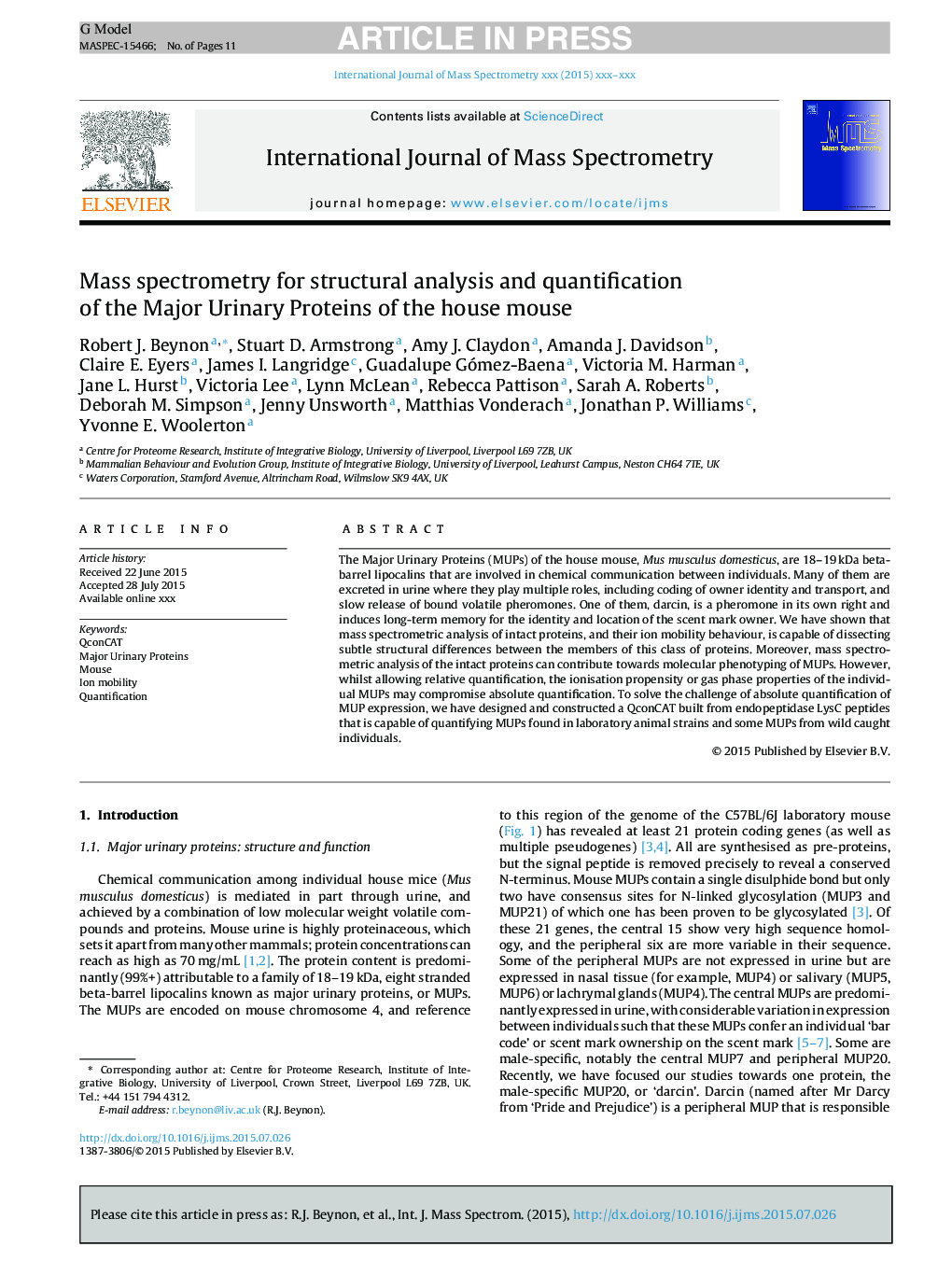| Article ID | Journal | Published Year | Pages | File Type |
|---|---|---|---|---|
| 7604355 | International Journal of Mass Spectrometry | 2015 | 11 Pages |
Abstract
The Major Urinary Proteins (MUPs) of the house mouse, Mus musculus domesticus, are 18-19Â kDa beta-barrel lipocalins that are involved in chemical communication between individuals. Many of them are excreted in urine where they play multiple roles, including coding of owner identity and transport, and slow release of bound volatile pheromones. One of them, darcin, is a pheromone in its own right and induces long-term memory for the identity and location of the scent mark owner. We have shown that mass spectrometric analysis of intact proteins, and their ion mobility behaviour, is capable of dissecting subtle structural differences between the members of this class of proteins. Moreover, mass spectrometric analysis of the intact proteins can contribute towards molecular phenotyping of MUPs. However, whilst allowing relative quantification, the ionisation propensity or gas phase properties of the individual MUPs may compromise absolute quantification. To solve the challenge of absolute quantification of MUP expression, we have designed and constructed a QconCAT built from endopeptidase LysC peptides that is capable of quantifying MUPs found in laboratory animal strains and some MUPs from wild caught individuals.
Related Topics
Physical Sciences and Engineering
Chemistry
Analytical Chemistry
Authors
Robert J. Beynon, Stuart D. Armstrong, Amy J. Claydon, Amanda J. Davidson, Claire E. Eyers, James I. Langridge, Guadalupe Gómez-Baena, Victoria M. Harman, Jane L. Hurst, Victoria Lee, Lynn McLean, Rebecca Pattison, Sarah A. Roberts, Deborah M. Simpson,
